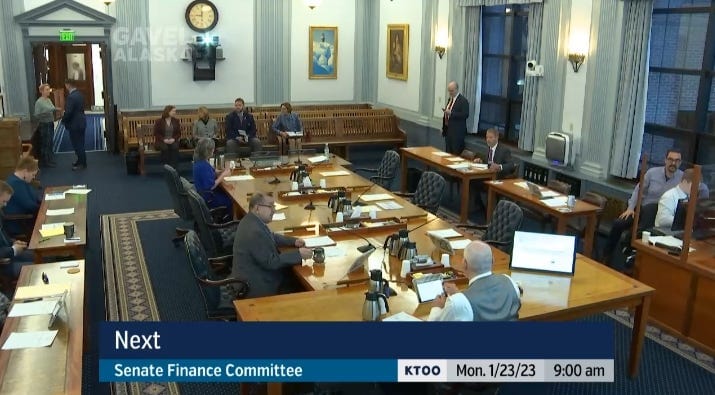Slaughtering the sacred cow: Alaska's budget volatility may put the Permanent Fund at risk
The state has much more stability in its budget picture now that the Alaska Permanent Fund is helping pay the bills, but some are already eyeing the fund for more spending than it can handle.

Good afternoon, Alaska! It’s still Day 8 of the legislative session.
In this edition we’ll take a deep dive into: The fundamentals of Alaska’s budget picture and how that picture sure contains a heckuva lot of oil-driven volatility. The state has much more stability in its budget picture now that the Alaska Permanent Fund is helping pay the bills, but some are already eyeing the fund for more spending than it can handle. That decision could come very quickly because—surprise—the state’s operating close to the edge where a string of worst-case scenarios could burn through what little savings we have in a matter of days.
Current mood: 😬
Alaska’s budget has always been volatile, but it’s getting really precarious now

The first few days of every legislative session in recent memory seem to hit similar beats: An overview of the state’s financial outlook that includes a look at oil production, a check-in on tax revenue (which mostly comes from oil), budget overviews and an update on where the state’s savings and investments are doing.
It’s a 30,000-foot overview that serves as a reminder that—surprise!—state revenue is really volatile when you’re counting on oil revenue, where price and production are driven by forces far from Juneau—despite what we like to tell ourselves. In just two years, oil sold at negative dollars due to the pandemic and at sky-high prices because of the uncertainty around Russia’s invasion of Ukraine.
The state has made significant strides in diversifying its income by tapping into the Alaska Permanent Fund Earnings Reserve Account’s (ERA) investment revenue to fund a portion of government—the percent of market value (POMV) draw—but as we’ve seen in the dividend debate, the Permanent Fund can’t be all things to all people.
To give you a good sense of how Alaska’s revenue picture breaks down now, here’s a slide from the Department of Revenue’s Friday presentation to the Senate Finance Committee showing how each revenue piece stacks up against each other. Investment earnings are driven by Alaska Permanent Fund’s POMV draw. Federal revenue typically comes with a designated purpose, so it doesn’t get counted toward the total of unrestricted general funds that most people watch spending by.

Senate Finance Committee co-chair Sen. Bert Stedman had this takeaway (after doing some math at the table to focus on the unrestricted general funds):
“So, it’s roughly 46% of our unrestricted general funds is predictable and stable,” he said, “leaving us with volatility in oil on the roughly 46% and the rest is other taxes and revenue.”
The comment gets at the heart of our current financial dilemma. On the one hand, Alaska’s budget is still highly sensitive to the oil market’s whims and dips could cause significant, near-immediate grief for a state thin on savings. On the other, Alaska’s budget is far less reliant on oil now than it has been, but only because of a healthy Alaska Permanent Fund… with “healthy” being the operative word.
It goes a long way to understanding where things sit now: at a precarious place.
On the edge: How a string of bad days could turn into a nightmare
This content is for Paid Members
Unlock full access to The Alaska Memo and see the entire library of members-only content.
SubscribeAlready have an account? Log in



